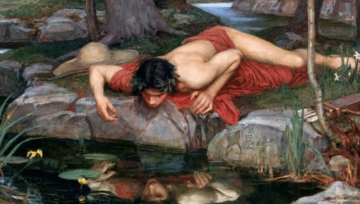Julia Friedman in Quillette:
 On my last visit to the National Gallery in London in October 2022, during Frieze Week, the wall beneath Vincent Van Gogh’s iconic Sunflowers still displayed noticeable palm-sized daubs of unmatched gray paint. The day before, Just Stop Oil protestors Phoebe Plummer, and Anna Holland had glued themselves to that wall, after dousing the painting with Heinz tomato soup. Their timing (Frieze Week) and venue for this instance of performative activism was not incidental. It pitted the purported excess of attention given to art—here represented by Van Gogh’s masterpiece—against the scarcity of “food” and “justice” for those affected by rampant inflation. In this zero-sum scenario, a choice had to be made between culture and human beings: “Are you more concerned about the protection of a painting, or the protection of our planet and people?” demanded Plummer, as she knelt beneath the soup-stained still life, one palm already affixed to the wall behind her. The efficacy of this attack, news of which quickly spread across both legacy and social media, derived from the cult status of Sunflowers: its cultural cachet, its recognizability and ubiquity. Yet Plummer and Holland saw it only as a prop for acting out their scripted and rehearsed demonstration.
On my last visit to the National Gallery in London in October 2022, during Frieze Week, the wall beneath Vincent Van Gogh’s iconic Sunflowers still displayed noticeable palm-sized daubs of unmatched gray paint. The day before, Just Stop Oil protestors Phoebe Plummer, and Anna Holland had glued themselves to that wall, after dousing the painting with Heinz tomato soup. Their timing (Frieze Week) and venue for this instance of performative activism was not incidental. It pitted the purported excess of attention given to art—here represented by Van Gogh’s masterpiece—against the scarcity of “food” and “justice” for those affected by rampant inflation. In this zero-sum scenario, a choice had to be made between culture and human beings: “Are you more concerned about the protection of a painting, or the protection of our planet and people?” demanded Plummer, as she knelt beneath the soup-stained still life, one palm already affixed to the wall behind her. The efficacy of this attack, news of which quickly spread across both legacy and social media, derived from the cult status of Sunflowers: its cultural cachet, its recognizability and ubiquity. Yet Plummer and Holland saw it only as a prop for acting out their scripted and rehearsed demonstration.
To the casual observer, this stagy use of an artwork as a backdrop for an ideological statement might have little in common with another, much subtler case when a different National Gallery painting served as a prop. This time there was no super glue, tomato soup, or declarative recitations, and no need to involve security.
More here.
